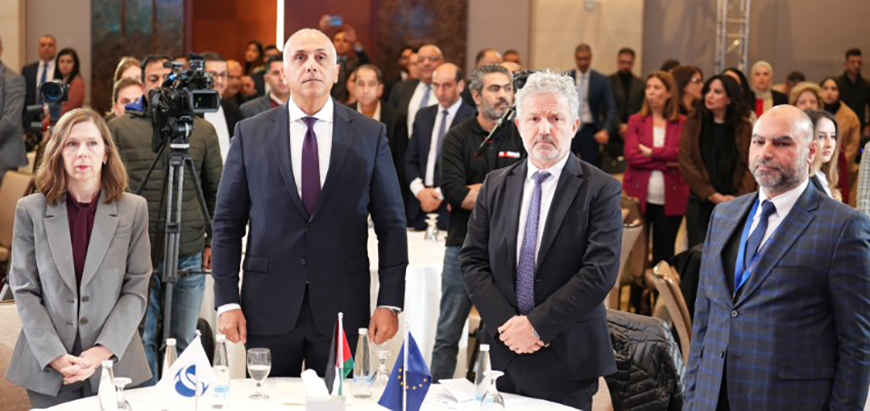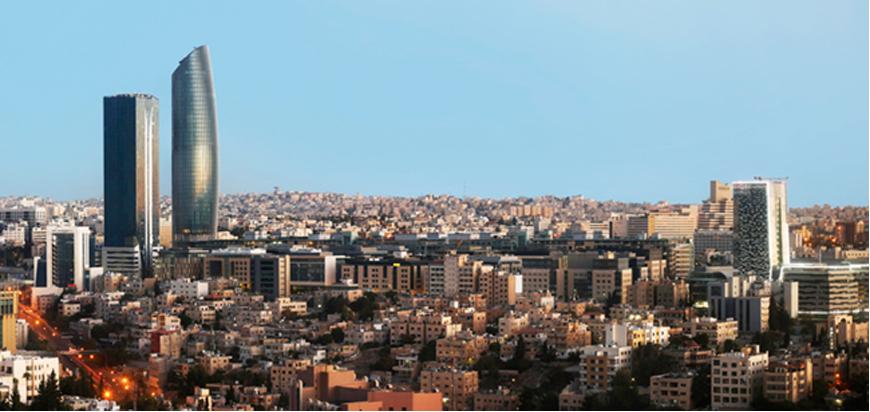You are here
Green Economy Financing Facility programme in Jordan launched
By JT - Dec 07,2022 - Last updated at Dec 07,2022

Jordan is the latest country to join the GEFF programme in the southern and eastern Mediterranean region, according to the EBRD (JT file photo)
AMMAN — The European Bank for Reconstruction and Development (EBRD), the European Union (EU) and the Green Climate Fund (GCF) have launched the Green Economy Financing Facility programme (GEFF) in Jordan in an effort to support the country’s transition to a greener economy.
Jordan is the latest country to join the GEFF programme in the southern and eastern Mediterranean (SEMED) region, according to a statement posted on the EBRD website.
Under the programme, the EBRD, GCF and EU will provide a total of $40 million in financing to local financial institutions, such as banks, microfinance institutions and leasing companies, to on-lend to the private sector for investment in high-performance technologies and services. This year to date, three GEFF facilities worth a total of $22 million have been signed with Cairo Amman Bank, Etihad Bank and the Microfund for Women.
Demand for Jordan’s key but scarce natural resources — water and energy — is growing continuously due to climate change and rapid population growth. The country’s population totalled 11.1 million in 2021.
The GEFF programme is designed to address significant climate mitigation and adaptation challenges by encouraging micro-, small and medium-sized enterprises (MSMEs) and households to invest in green and innovative technologies that promote energy, water and material efficiency solutions alongside renewable energy.
At the programme launch, the EBRD presented its holistic approach to supporting green investments through a combination of financing, investment grants and technical assistance for partner financial institutions and end clients through the EBRD GEFF programme.
It also presented case studies from the programme in the SEMED region. Representatives from the public and private sectors shared their views on challenges related to green financing and put forth ideas on how to catalyse green investments in Jordan.
The event was attended by Environment Minister Muawieh Radaideh, EU Ambassador to Jordan Maria Hadjitheodosiou, EBRD Managing Director for SEMED Heike Harmgart, EBRD Director for the eastern Mediterranean region Philip ter Woort and EBRD Managing Director for Financial Institutions Francis Malige.
Philip ter Woort said: “We are very proud that, with EU and GCF support, we are all working to build a greener and more resilient economy in Jordan. I am confident that, jointly with our partner financial institutions, we will be able to share many more impactful success stories related to private sector investments in green technologies in the years to come”.
Hadjitheodosiou said: “The European Union is committed to fighting climate change and responding to its challenges through ambitious policies within Europe and in its neighborhood. Supporting the establishment of the EBRD Green Economy Financing Facility (GEFF) in Jordan was an obvious choice for the EU, since institutional set-up cannot be completed without offering sustainable financing opportunities to the private sector.
“The EU has contributed 4.5 million euros to the GEFF facility, which provides possibilities for investment financing that addresses climate change needs and provides new economic opportunities in high-performance technologies and services supporting Jordan's green economy transition”.
Since it started investing in Jordan in 2012, the EBRD has provided more than 1.9 billion euros in financing through 67 projects across the country, including financial support for the Jordanian banking sector in the form of MSME loans, subordinated debt and trade finance facilities.
Since 2014, cumulative Green Economy Transition (GET) commitments of 916 million euros to financial institutions in the SEMED region have resulted in annual GHG emission reductions of 630,000 tonnes of CO2 emissions and annual water savings of 2.8 million cubic metres.
Related Articles
AMMAN — The European Bank for Reconstruction and Development (EBRD), the European Union (EU) and the Green Climate Fund (GCF) joined forces to host a Green Growth Conference on Tuesday to promote the impact of the Green Economy Financing Facility (GEFF) programme in Jordan.
AMMAN — The European Bank for Reconstruction and Development (EBRD) and the European Union (EU) in Jordan are promoting green investments in
AMMAN — The European Bank for Reconstruction and Development (EBRD) and Bank Al Etihad of Jordan have signed a $10 million Green Economy Fin














